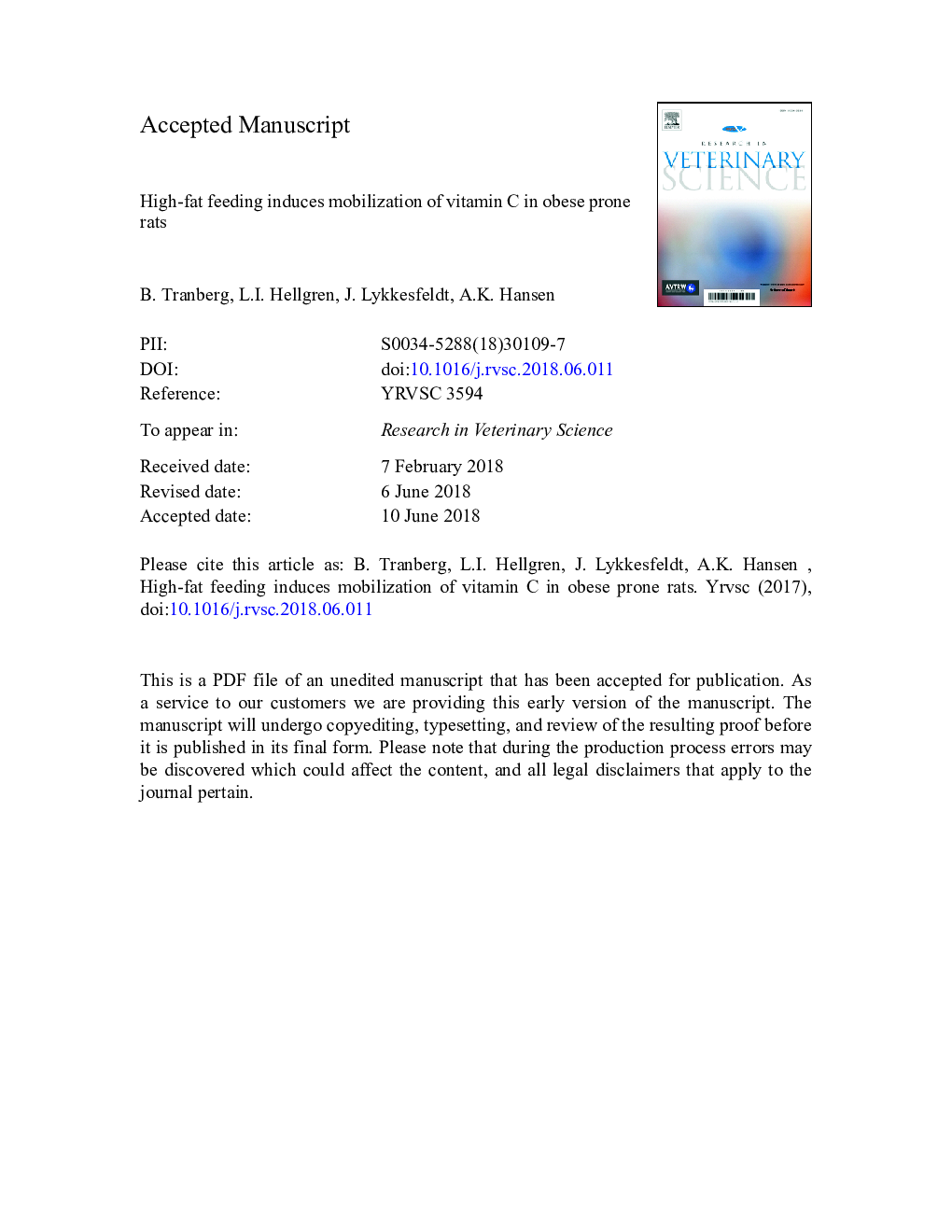| Article ID | Journal | Published Year | Pages | File Type |
|---|---|---|---|---|
| 8503917 | Research in Veterinary Science | 2018 | 14 Pages |
Abstract
In obesity and dyslipidemia, hydrolysis of triacylglycerol (TAG) into non-esterified fatty acids (NEFAs) may contribute to insulin resistance, and production of oxygenated, bioactive polyunsaturated fatty acids may increase oxidative stress. Here we show that after six weeks of high-fat feeding of obese prone rats (Crl:OP(CD), vitamin C was increased both in liver (Pâ¯<â¯0.01) and plasma (Pâ¯<â¯0.001), while both TAG (Pâ¯<â¯0.01) and NEFA (Pâ¯<â¯0.001) were lower than in low-fat fed control rats. Hepatic vitamin C biosynthesis was similar between groups, indicating that a new steady state level was established with a higher vitamin C level adequate for supplying the systemic needs. Glucose and insulin sensitivity were unaffected at this stage. Eventually, the mobilization of vitamin C may be seen as a mechanism to protect the host against insulin resistance.
Related Topics
Life Sciences
Agricultural and Biological Sciences
Animal Science and Zoology
Authors
B. Tranberg, L.I. Hellgren, J. Lykkesfeldt, A.K. Hansen,
